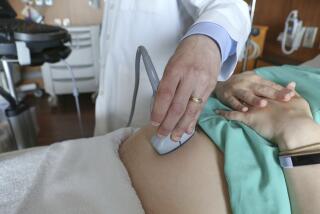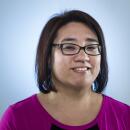In some areas, finding a dentist is like pulling teeth
- Share via
Have a toothache in Alpine County? Tough luck. There are no active dentists there, making it the most underserved dental population in California, according to a report released Thursday by the UCLA Center for Health Policy Research.
The 700-square-mile mountainous region is one of several counties with severe dentist shortages. San Benito and Inyo counties have less than one dentist per 5,000 people; Imperial and Colusa counties have less than one dentist per 4,000. Even some poorer parts of Los Angeles County are considered underserved, said Nadereh Pourat, director of research planning at the UCLA School of Public Health and the report’s primary author.
“In some areas, particularly when they’re rural, you’re talking about having to travel a long way before you can find a dentist,” Pourat said. “And if you don’t have dental insurance, you have to pay out of pocket in order to find a dentist willing to accommodate you.”
In Hollister -- located in San Benito County, where the UCLA data show only five working dentists serving nearly 58,000 residents -- Dr. Mark Stephens said he’s been able to handle the demands on his practice, so far.
“If someone calls with a toothache, we try to see them the same day, but some offices don’t see them for a week or two,” Stephens said. “If I have to work through lunch or stay late, I will.”
Stephens said he thought there were more than a handful of dentists still practicing locally, but added that in the last several months, his brother, who is also a dentist, sold his practice and another dentist died.
Like many dentists, Stephens does not accept Denti-Cal, the state’s dental insurance for the poor. He said he knows of only one dentist in Hollister who does.
The shortage situation may worsen in some already-underserved areas because new dentists are not keeping pace with those retiring.
Because dentists often leave school with between $200,000 and $300,000 in loans, setting up practice in areas where patients rely on government-sponsored insurance that pays only 30 to 40 cents on the dollar can be hard, said Cathy Mudge, chief administrative officer of the California Dental Assn.
“They need to be able to repay that loan,” she said.
To encourage new dentists to move to needy areas, Mudge said, the association’s foundation offers a loan repayment program. In exchange for a three-year commitment in an underserved population, the foundation covers their loan payments during that time.
For Dr. James Forester, who works at La Clinica de Tolosa in Paso Robles, that equals about $35,000 a year in loan payback -- a hefty sum, particularly when he’s working at a clinic that pays significantly less than what he could be making elsewhere.
“For me to be able to work in a population where people really need me is ideal,” he said. “Who else would be here if I wasn’t here? It’s a great opportunity, but also a responsibility. These people are here. They need care too.”
--
More to Read
Sign up for Essential California
The most important California stories and recommendations in your inbox every morning.
You may occasionally receive promotional content from the Los Angeles Times.











